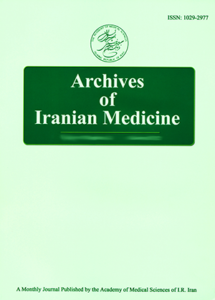Heart Rate and Cardiovascular Events: A NestedCase-Control in Isfahan Cohort Study
Authors
Affiliations
- 1Cardiac Rehabilitation Research Center, Isfahan Cardiovascular Research Institute, Isfahan University of Medical Sciences, Isfahan, Iran. drimanzand1@gmail.com.
- 2Cardiovascular Research Center, Isfahan Cardiovascular Research Institute, Isfahan University of Medical Sciences, Isfahan, Iran Saw Swee Hock School of Public Health, National University of Singapore, Singapore.
- 3Cardiovascular Research Center, Isfahan Cardiovascular Research Institute, Isfahan University of Medical Sciences, Isfahan, Iran, Department of Cardiology, School of Medicine, Isfahan University of Medical Sciences, Isfahan, Iran.
- 4Cardiovascular Research Center, Isfahan Cardiovascular Research Institute, Isfahan University of Medical Sciences, Isfahan, Iran.
- 5Cardiac Rehabilitation Research Center, Isfahan Cardiovascular Research Institute, Isfahan University of Medical Sciences, Isfahan, Iran.
Abstract
Introduction: Elevated heart rate (HR) is known to be a risk factor. The aim of the present study was to investigate the association of HR with the incidence of cardiovascular disease (CVD) in Iranian adults.
Methods: The Isfahan cohort study (ICS) was a longitudinal study started in 2001 on 6504 adults aged ≥ 35 years in urban and rural areas of central Iran. In a nested case control study, a control was randomly selected for each CVD event occurring during 7 years of follow up using density sampling method. HR at baseline was assessed by electrocardiogram. CVD was defined as incident coronary heart disease (myocardial infarction, unstable angina and sudden cardiac death) and stroke. The odds ratios (OR) were estimated by conditional logistic regression.
Results: 432 participants with CVD events in the case group and 401 participants free of CVD in the control group were included in the analysis. While HR did not show any significant relationship with CVD events in the crude model (P = 0.208), it was detrimentally associated with them when age was included (OR = 1.01, 95% CI: 1.00 – 1.02, P = 0.024). A dose response effect of quintiles of HR was seen in which significant association with CVD events started at third quintile [OR = 1.98 (1.15 – 3.41)] and increased toward fifth quintile [OR = 2.53 (1.47 – 4.36)] in the adjusted model for age, sex and HR-lowering drugs (P for trend = 0.001). This association remained statistically significant when other traditional risk factors were included in the model.
Conclusions: An elevated heart rate was associated with the occurrence of cardiovascular events. It can be considered as a predictor of cardiovascular disease independently of other risk factors in Iranian adults
How to Cite
. 2014 Sep;17(9):633-7. doi: 10.1017/S1368980015000269. PMID: 25204481.

